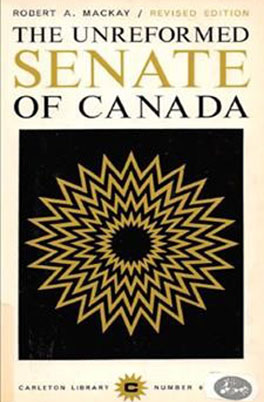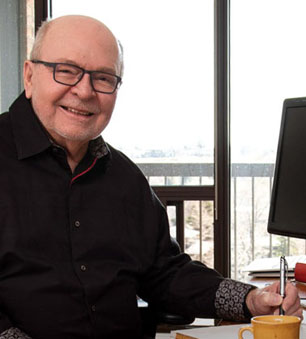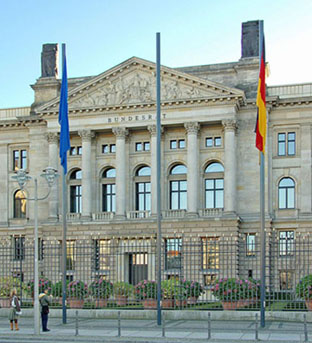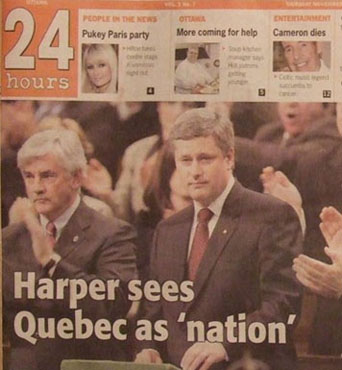Senate reform for better regional representation still a great idea .. but it has to recognize the cross-Canada democracy
Jun 20th, 2021 | By Counterweights Editors | Category: In BriefCOUNTERWEIGHTS EDITORS, GANATSEKWYAGON, ON. JUNE 20, 2021. We (well most of us anyway) like Justin Trudeau’s current Liberal government of Canada more than some we know. It is not even close to half-perfect, but to us it’s still head and shoulders above any available alternative.
One thing we do not at all admire from the Trudeau Liberal workshop, however, is the government’s anaemic stab at Senate reform – a perennial Canadian problem at least since Robert A. MacKay’s classic on The Unreformed Senate of Canada was first published in 1926.
The trouble with the Justin Trudeau Liberal Senate tinkering
The key flaw in the kind of Senate reform the Justin Trudeau government has been pushing since it won the 2015 federal election – and more exactly since the creation of the Independent Advisory Board for Senate Appointments in 2016 – is that it just evades the crucial “regional” issue that a Senate or “Upper House” is meant to address in a modern federal system.
One expression of this crucial issue occurs in recent writing on the history of Canadian democracy : “In a 1940s essay on ‘Decentralization and Democracy,’ Harold Innis wrote: ‘The complex problems of regionalization in the recent development of Canada render the political structure obsolete …’ And this remains an issue in the early 21st century! Politically, it at least ought to lead into the longstanding debate on Canadian Senate reform.”)
The same broad thinking is expressed in more up-to-date language by the headline in a Calgary Herald article from this past Wednesday : “Braid: Trudeau should wait and allow Alberta voters to fill two Senate seats … With the second-largest land mass of any country on earth, Canada obviously needs regional balance more than most.”
For further background to this headline see a Maclean’s article by Jason Markusoff : “The quixotic quest to get elected senators into the red chamber … Jason Kenney says Alberta will go ahead with a Senate vote this fall. But will the winners be allowed to sit in the upper house – even if a Prime Minister agrees to appoint them?” (And for a piece altogether against the quixotic quest see Max Fawcett’s “Stop trying to elect senators, Alberta” in the National Observer.)
Two cheers for Alberta Senate elections
What we want to do here is broadly support Don Braid’s call on PM Justin Trudeau to “wait and allow Alberta voters to fill two Senate seats” this fall – to at least keep coals burning on the kind of regionally representative Senate reform that some in Alberta and elsewhere have been urging since the 1980s. At the same time, we also want to strongly urge that the old “Triple E Senate” reform model which Mr. Braid and others are still touting as the eventual ultimate holy grail desperately needs to be re-thought in our particular Canadian context.
The crucial flaw in the Triple E model is “equal provincial representation.” This does bring a kind of crazy enhanced regional balance to the one-citizen-one-vote cross-Canada democracy. (And, some would also stress, to the demographic reality that Ontario and Quebec together account for more than 60% of the Canada-wide population.) But as Ontario residents eg we especially resent the extreme implication that one Canadian citizen of Prince Edward Island (population 160,536) is worth 92 citizens of Ontario (population 14,789,778).
More broadly, a provincially equal Senate in Canada would give a majority of votes in the regional “Upper House” of the Canadian parliamentary democracy to the six least populous provinces, representing just over 13% of the Canada-wide population.
Like the Ontario-PEI comparison, in the 21st century this carries the principle of regional representation to a ridiculous extreme. It makes the principle that each province in the Canadian federal system is somehow equal absurdly more important than the principle that each citizen of the Canada-wide democracy (or “free and democratic society” as the Constitution Act, 1982 puts it) is also somehow equal.
Towards a more sensible approach to regional balance in the 21 st century
It is true enough that the “Triple E” Senates of both the US and Australian federal systems do have what amounts to equal provincial representation in Canada (though in both those places they talk about “states” instead of “provinces”). But Mr. Braid blurs this issue too much when he correctly enough writes : “Every other democratic state from Australia to the U.S. and Europe has something like an equal and elected upper chamber.”
For us the “something like” here needs to be underlined boldly in a Canadian context. For example, the regionally representative upper house or Bundesrat in today’s federal republic of Germany – created more recently than the Senates of the USA or Australia (or Canada), in the wake of the Second World War – does address the problem of balancing regional representation in the federation with the citizenry of the federation-wide democracy.
More exactly, in the Bundesrat : “The number of votes a state is allocated is based on a form of degressive proportionality according to its population … Each state is allocated at least three votes, and a maximum of six. States with more than 2 million inhabitants have 4 votes, 6 million inhabitants have 5 votes, 7 million inhabitants have 6 votes.”
We can’t resist noting that our colleague Randall White (author among other things of the 1990 report, Voice of Region : The Long Journey to Senate Reform in Canada) proposed a similar “degressive proportionality” revision of the Triple E model in Canada as long ago as 2005. We’re told that on Dr. White’s latest permutation of this revised model each province is allocated at least three members of a reformed “elected” and “effective” Canadian Senate. Then each province with more than 10% of the Canada-wide population gets double the allocated three members – ie six members. This gives six provinces with three members each, and four provinces (Ontario, Quebec, BC, and Alberta) with six members each.
With still more particular reference to Canada – and the Harper government’s leadership in the Canadian House of Commons’ recognition that “the Québécois form a nation within a united Canada” late in November 2006 – Randall White’s “degressive proportionality” revision finally doubles the Quebec representation in the reformed Senate to 12 members. It then adds one member each for the three territories, and one member elected by First Nations “reserves” (in the current legalese) across the country.
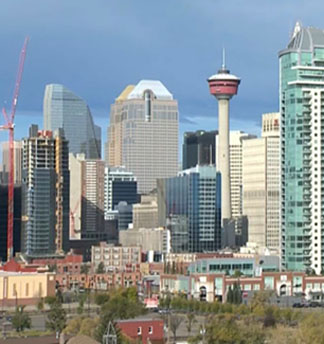
This gives a reformed Senate of 52 members. (There may finally be a successful argument for an additional two members representing First Nations on and off reserves, although defining this electorate practically could raise difficult further questions!)
Two concluding thoughts
Other variations on “degressive proportionality” Senate reform in Canada are of course possible. Our only deep argument here (made with much respect) is that if Premier Kenney’s Alberta government – and such eminent supporters on this issue as Don Braid – had some more sensible concept of provincial representation ultimately in view than the discredited “Triple E” model, the Alberta provincial Senate elections apparently to be held this fall would seem at least a little less “quixotic.”
(And on top of all this, many Canadians looking due south in 2021 may also feel that the last thing we need in Canada today is an elected Senate like the one in the USA, where the 576,851 people in Wyoming have the same representation as the 39,538,223 people in Bill Maher’s troubled Golden State of California.)
